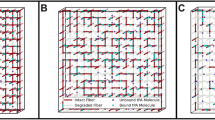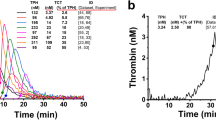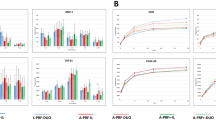Abstract
LITTLE is known about the mechanism by which blood clots or fibrin monolayers usually lyse. The enzyme plasmin (fibrinolysin) has been assumed to play a key part in this mechanism and for this reason plasmin, its substrates fibrinogen and fibrin and its naturally occurring inhibitors have all been extensively studied and characterized1. The biological importance of these studies has depended on the assumption that the plasmin system serves to maintain the homeostatic balance between the polymerization of fibrin and the dissolution of this polymer. Although much is known about the activation of the polymerization phase of this homeostatic system, there is little information about the mode of activation of the clot dissolving or plasmin system in the intact blood clot. We describe here in qualitative terms some of the factors and steps involved in the lysis of a clot from whole blood diluted 1: 10 with phosphate buffer2.
This is a preview of subscription content, access via your institution
Access options
Subscribe to this journal
Receive 51 print issues and online access
$199.00 per year
only $3.90 per issue
Buy this article
- Purchase on Springer Link
- Instant access to full article PDF
Prices may be subject to local taxes which are calculated during checkout
Similar content being viewed by others
References
Cohen, S. I., and Warren, R., New Engl. J. Med., 264, 79 (1961).
Fearnley, G. R., Bandforth, G., and Fearnley, E., Clin. Sci., 16, 645 (1957).
Taylor, F. B., and Staprans, I., Arch. Biochem. and Biophy., 114, 38 (1966).
Müller-Eberhard, H. J., Dalmasso, A. G., and Calcott, M. A., J. Exp. Med., 123, 33 (1966).
Müller-Eberhard, H. J., and Biro, C. E., J. Exp. Med., 118, 447 (1963).
Kabat, E. A., and Mayer, M. M., Experimental Immunochemistry, 762 (Charles C. Thomas, Springfield, Illinois, 1961).
Müller-Eberhard, H. J., Fed. Proc., 26, 744 (1967).
Linscott, W. D., and Nishioka, K., J. Exp. Med., 118, 795 (1963).
James, N. T., Johnson, S. A., Monto, R. W., Diab, G., and Caldwell, J., Blood, 19 (1962).
Harboe, M., Müller-Eberhard, H. J., Fudenberg, H., Polley, M. J., and Mallison, P. L., Immunology, 6, 412 (1963).
Cooper, N. R., and Becker, E. L., J. Immunol., 98, 119 (1967).
Author information
Authors and Affiliations
Additional information
An erratum to this article is available at https://doi.org/10.1038/2161358e0
Rights and permissions
About this article
Cite this article
TAYLOR, F., MÜLLER-EBERHARD, H. Factors influencing Lysis of Whole Blood Clots. Nature 216, 1023–1025 (1967). https://doi.org/10.1038/2161023a0
Received:
Published:
Issue Date:
DOI: https://doi.org/10.1038/2161023a0
Comments
By submitting a comment you agree to abide by our Terms and Community Guidelines. If you find something abusive or that does not comply with our terms or guidelines please flag it as inappropriate.



